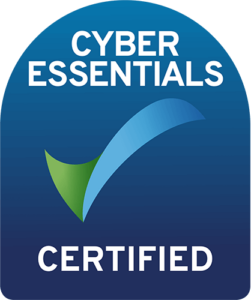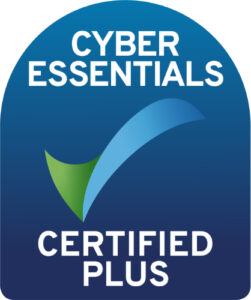Thinc insights
Intercompany solutions are no longer the preserve of the biggest businesses. For SMEs managing multiple entities, the answers are now within reach.
Small and medium-sized enterprises (SMEs) are increasingly finding themselves operating across various regions or managing several distinct business units. This brings a unique set of challenges, from consolidating data and finances to managing intercompany transactions and maintaining data integrity.
The good news is intercompany solutions are available to help your business – and you don’t need the budget of an international enterprise to afford them.
Thinc’s Head of SAP Practice has worked with many organisations that require support with intercompany transactions and management. He’s seen first-hand how many smaller operations are unaware that these tools are just as suitable to growing businesses as they are to larger ones.
“From my experience, it’s a common misunderstanding that intercompany functionality is only for big businesses. In reality, the SMEs that experience accelerated growth are those that implement these systems early on,” he says.
“The fastest-growing businesses we work with don’t wait for issues to arise. They proactively establish an IT infrastructure to support their operations, break the correlation between administrative hires and growth, and ultimately pave the way for sustained success.”
Want to hear more from Thinc’s experts about intercompany operations? Catch up on our on-demand intercompany webinar.
At Thinc we have both the technology and experience to streamline and simplify the complexities of operating with multiple entities. Here’s why intercompany tools are not just for the global enterprises but are essential and cost-effective for SMEs as well.
When managing multiple businesses, one of the biggest hurdles is dealing with fragmented data. Siloed information can lead to inefficiencies, errors, and delays. Thinc can provide a unified platform that sits above the individual trading entities, allowing for seamless data sharing and integration.
This means that whether you’re consolidating sales data from different regions or sharing inventory levels across businesses, you can do it all in one place. The automation these tools offer reduces the manual effort required, freeing up valuable time and resources for your teams.
Financial reporting across multiple entities can quickly become overwhelming. Thinc’s solutions empower SMEs to produce comprehensive financial and management reports that account for eliminations, varying nominal structures and even foreign exchange rates.
It’s not just a time-saver – it enhances the accuracy and reliability of financial data. Real-time reporting capabilities mean you can make informed decisions quickly, without the hassle of compiling and reconciling data manually.
Intercompany trading often involves a high volume of transactions, which are prone to duplication and human error. Automation tools within Thinc’s solutions allow SMEs to streamline sales and purchasing transactions between their own organisations.
This reduces duplicate efforts and minimises errors, making the entire process more efficient. Moreover, these tools facilitate the sharing of crucial business data, such as customer and supplier information, across different entities, ensuring consistency and accuracy.
At Thinc, we’re working with a number of small businesses who are using our solutions to transform how they manage their intercompany processes. Here are just three examples.
Post Brexit, a beverage brand working with Thinc found that it required an EU company to be established to facilitate smooth trade to and from Europe. The new company introduced an administrative overhead that didn’t previously exist, and the business required manual duplication of transactions, often leading to errors and stock discrepancies.
With the introduction of an intercompany solution, this was fully automated, reducing the burden on the finance team and freeing them to perform value add tasks instead of admin.
An e-commerce client, trading across multiple platforms and brands, was facing the need to employ more staff as the business grew, simply to maintain master data across trading entities and platforms.
With the introduction of the data management functions of the intercompany tool, the upkeep was limited to a simple point of entry. The business was able to scale its catalogues and product ranges without needed additional staff.
One of our clients is an internationally recognised automotive brand that serves markets around the globe with both vehicle production and brand licensing. Before collaborating with Thinc, the business used siloed systems in localised territories with no opportunity for group integration. This led to challenges in data consolidation, and they were forced to subcontract local administrative assistance to manage the vast workload.
Now, despite the organisation’s scale, their back-office systems are efficiently managed by a team of about five people from their UK headquarters and month-end processes take days, not weeks.
Determining the return on investment (ROI) for replacing existing user administration with intercompany technology can be a relatively a straightforward process.
Start by identifying the total cost of your current manual processes. This includes the salaries of administrative staff, costs related to errors and inefficiencies, and any expenses from duplicated efforts. With this information Thinc can guide you through the costs of implementing technology that can automate and streamline these processes.
For instance, if your current manual processes take 100 hours a month, and through engagement with a Thinc consultant the expected saving though technology could reduce this by 70%, you save 70 hours monthly.
Multiply these saved hours by the hourly wage of your administrative staff to find the labour cost savings.
Add to this the direct cost savings from error reductions and increased efficiencies and you will quickly demonstrate the time saving and financial benefits of adopting intercompany technology.
Intercompany tools are not just for large enterprises. They offer significant benefits to SMEs by streamlining data consolidation, simplifying financial management, automating intercompany transactions, and enhancing reporting capabilities. These tools are designed to be cost-effective and scalable, making them an ideal solution for small and medium-sized businesses operating across multiple entities.
If you’d like to chat about how Thinc’s intercompany solutions for SAP Business One can help you, get in touch.
Related Topics
Get in touch
If you have multiple entities making up your business, an intercompany solution will make managing processes – from financial reconciliation to data streamlining – much more straightforward. At Thinc we can help you find the right solution for your needs.


Enter your details into the contact form below, and one of our experts will be in touch to arrange a time to speak.
If you’re an existing customer looking for support, please e-mail servicedesk@wearethinc.com, or visit our support page where you can download our remote support apps.